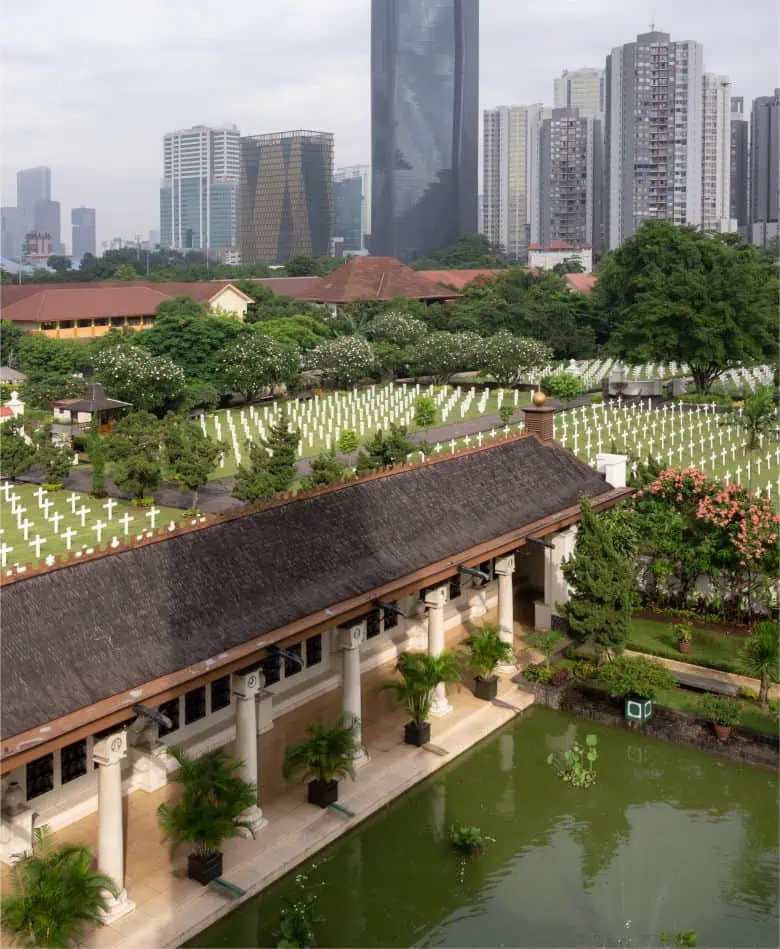
Nestled in the heart of Jakarta, Menteng Pulo war cemetery stands out for its serene Simultaan church and columbarium, offering a poignant contrast to the city’s hustle and bustle.
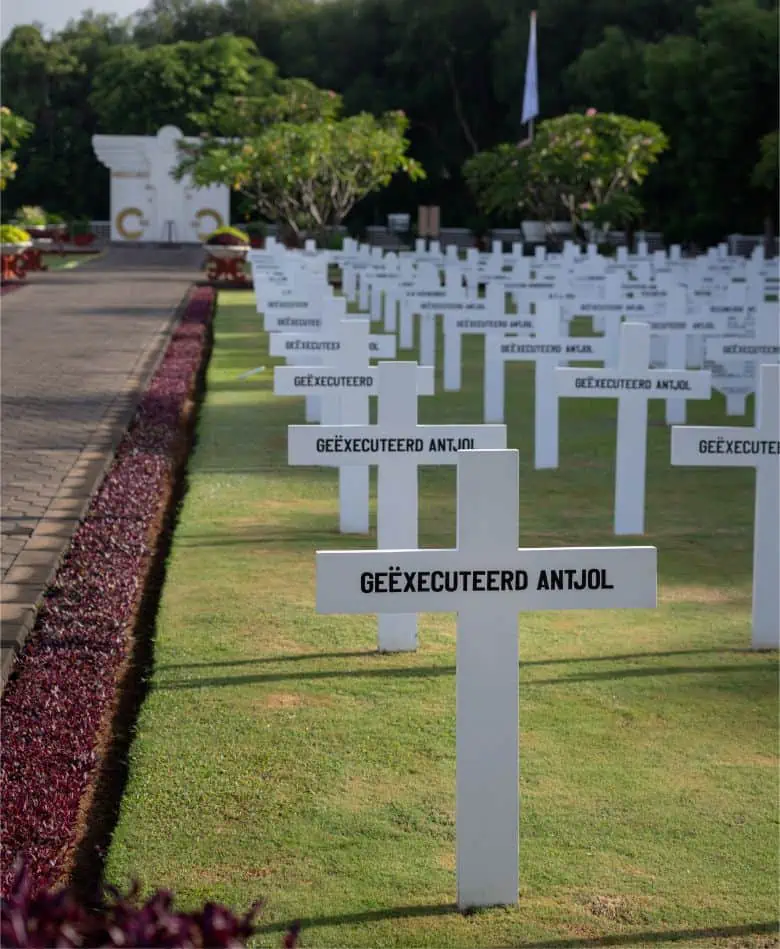
Ancol war cemetery bears the sombre history of being an execution site during the Japanese occupation, with the Hemelboom mindi tree serving as a silent witness to the past.
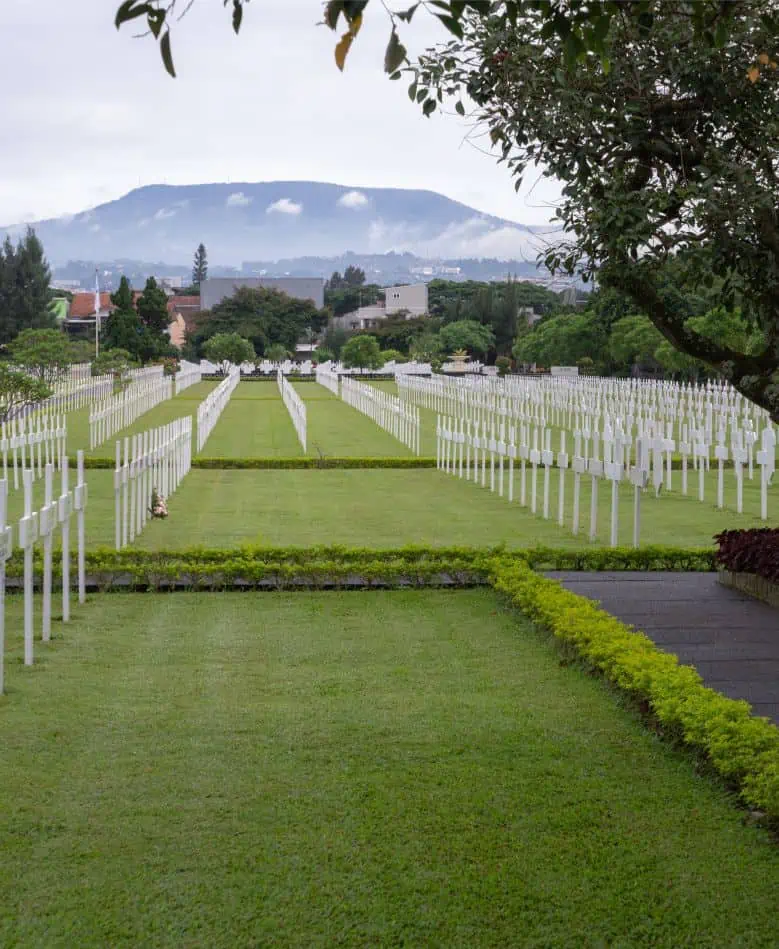
Set against Bandung’s serene backdrop, Pandu war cemetery – with its renowned Tjiaterstelling monument – was established in 1948, six years after the Battle of the (nearby) Tjiater Pass.
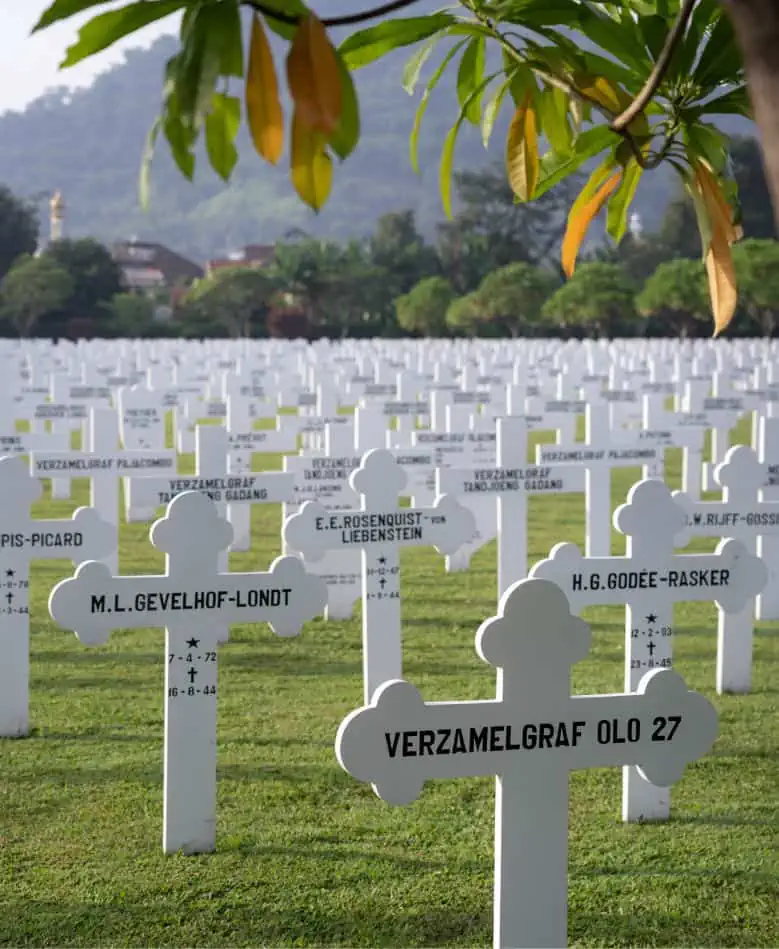
Distinctive because it contains the most graves of all war cemeteries, Leuwigajah war cemetery was initially set up as a burial ground for the deceased from nearby internment camps.
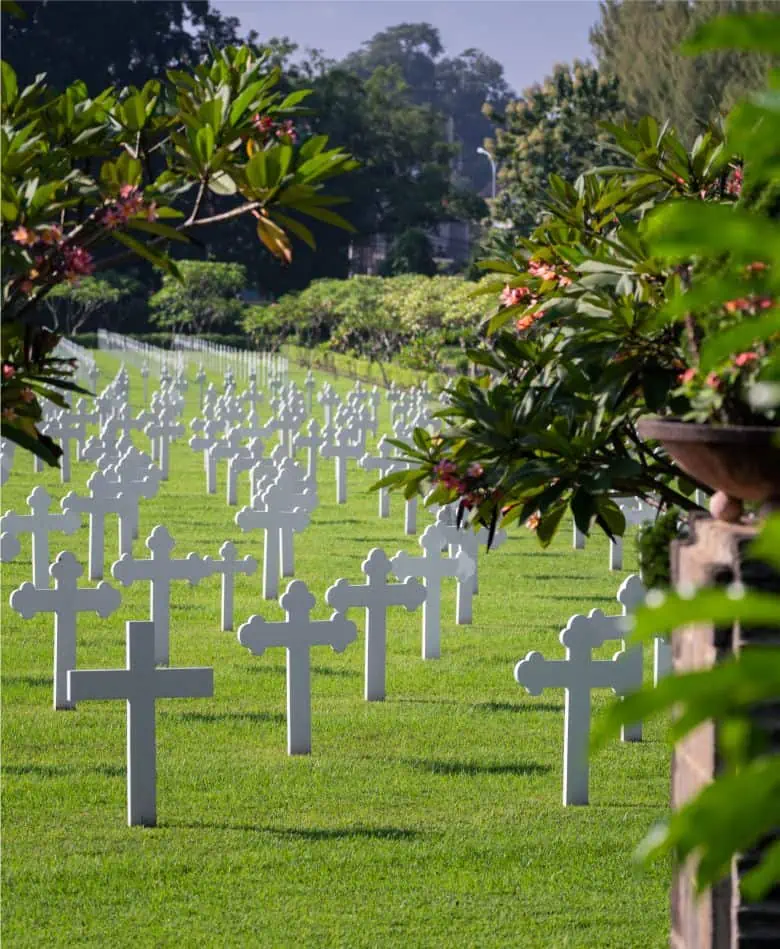
Because Kalibanteng war cemetery is marked by a significant number of women and children laid to rest here, it is often referred to as the women and children’s war cemetery. Their graves alongside the men’s, tell a story of hardship and resilience.
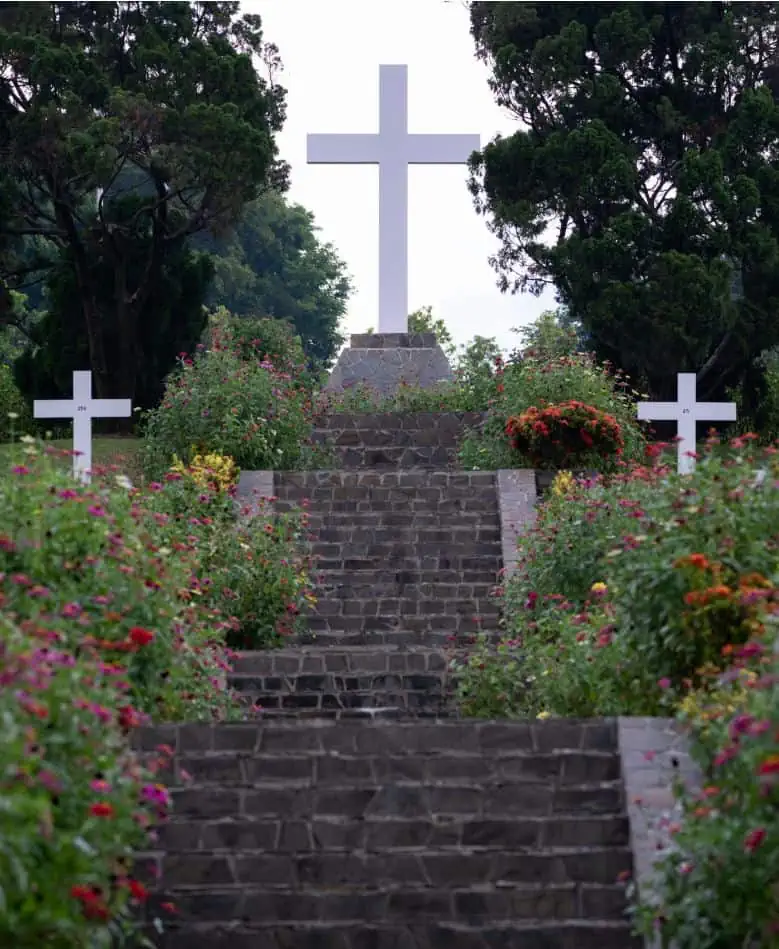
Located on a hill in Semarang, Candi war cemetery is the sole military Dutch war cemetery in Indonesia. It was established by the Dutch Tiger Brigade in Semarang in 1946.
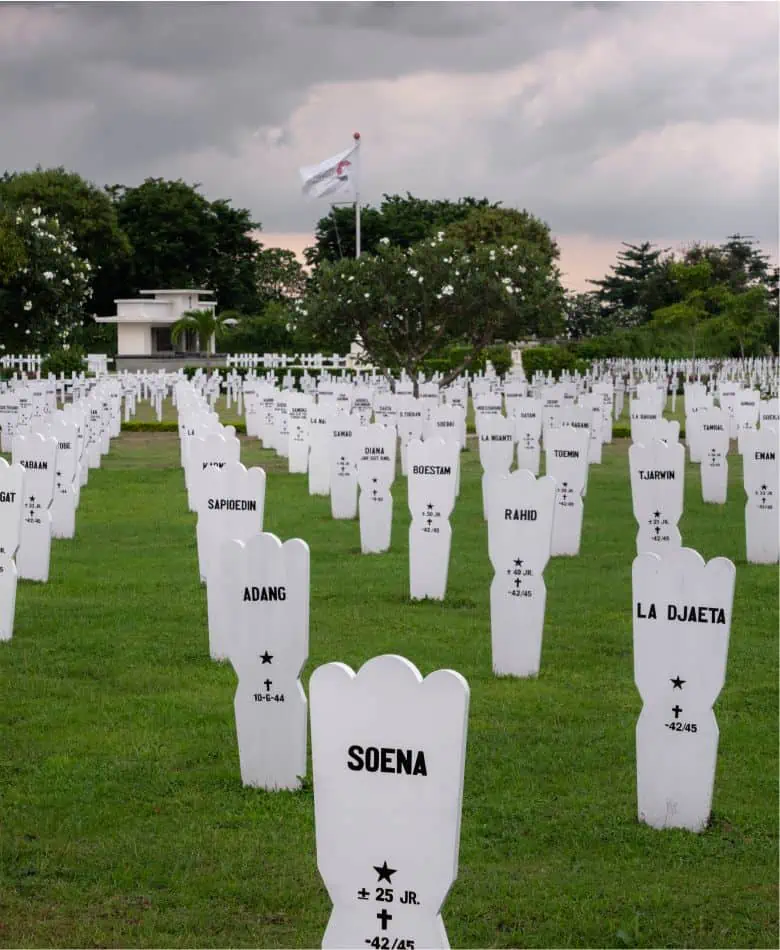
Known as the navy war cemetery, Kembang Kuning war cemetery is the resting place of numerous Royal Navy personnel and houses the renowned Karel Doorman monument.
Welcome to the Netherlands war cemeteries in Indonesia, the final resting place of war victims – military and civilian from varying backgrounds. These sacred grounds bear witness to the resilience and diversity of those who experienced the upheavals of war. As you explore, let their stories inspire reflection, learning, and a commitment to a future of peace and safety for all.
Webdeveloper.id menyediakan jasa pembuatan website profesional untuk bisnis Anda yang mencakup desain modern dan kekinian. Dengan pengalaman lebih dari 1500+ project dan portofolio yang kuat, kami memastikan situs web Anda akan menonjol dan memenuhi kebutuhan bisnis Anda.